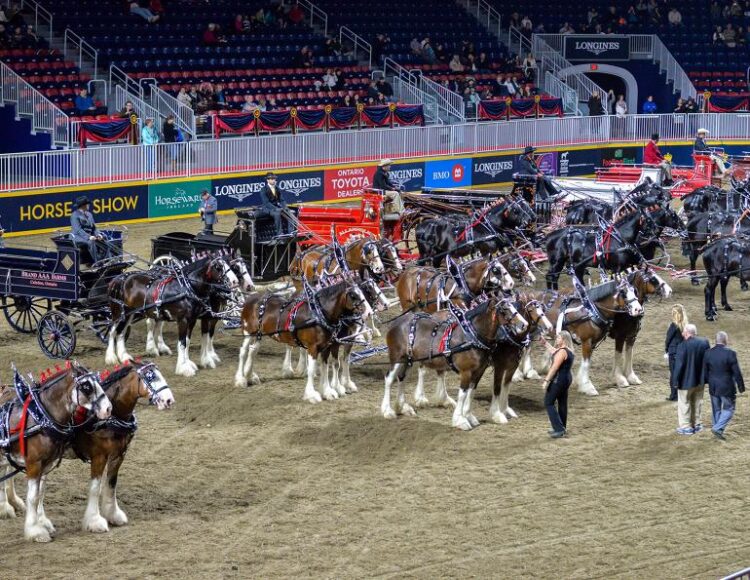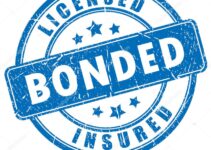In the world of marketing, there’s a niche that’s as unique as it is compelling – equestrian marketing. This specialized field focuses on promoting products, services, and experiences tailored to the equestrian community, a diverse and passionate group of individuals united by their love for horses. The equestrian market is characterized by its unique characteristics, including a high level of engagement, a willingness to invest in quality products and services, and a deep-rooted sense of community. Building a strong brand in this industry requires a deep understanding of these characteristics and a strategic approach to marketing that resonates with this unique audience.
Page Contents
Understanding the Equestrian Market

Source: issuu.com
The equestrian market is as diverse as it is passionate. It includes competitive riders who participate in disciplines such as dressage, show jumping, and eventing; horse enthusiasts who may not ride but are captivated by the beauty and majesty of horses; and recreational riders who enjoy the pleasure of a leisurely trail ride. Each of these segments has its own unique interests, preferences, and needs, making it essential for brands to understand and cater to these differences.
Demographically, the equestrian market is predominantly female, with a significant presence in the 35-54 age group. Many equestrians are high-income earners, reflecting the significant investment required to own and care for horses. However, the market also includes a broad range of individuals who may not own horses but are deeply invested in the equestrian lifestyle, from attending horse shows to following equestrian sports and purchasing equestrian-themed merchandise.
Defining Your Brand Identity
In the equestrian industry, a clear and compelling brand identity is crucial. This identity serves as the foundation of your marketing efforts, guiding your messaging, visual branding, and overall approach to engaging with your audience. Key elements of your identity include your mission statement, which articulates your brand’s purpose and direction; your values, which reflect what you stand for; and your identity, which characterizes how your brand communicates and interacts with its audience.
Its identity should resonate with your target audience and differentiate you from your competitors. For example, if your brand caters to competitive riders, your mission statement might emphasize performance, innovation, and excellence, while your personality might be characterized by ambition, determination, and a competitive spirit.
Developing a Compelling Story
Storytelling is a powerful tool in equestrian marketing. A compelling narrative can captivate your audience, evoke emotion, and create a deep connection between your brand and its followers. Your story might revolve around the founding of your company, the inspiration behind your products, or the impact your brand aims to make in the equestrian community.
Crafting a compelling brand story requires authenticity, creativity, and a deep understanding of your audience. It’s not just about telling a story; it’s about telling the right story in a way that resonates with your audience and aligns with your whole identity. Whether it’s a tale of overcoming adversity, a celebration of equestrian tradition, or a vision for the future of the sport, your brand story should be a central element of your marketing strategy.
Building a Consistent Visual Identity
Visual branding is another critical aspect of building a strong brand in the equestrian industry. This includes elements such as your logo, color scheme, typography, and imagery, all of which should reflect your identity and appeal to your target audience. For example, a brand targeting the luxury segment of the equestrian market might opt for a sophisticated color palette, elegant typography, and high-quality imagery that conveys a sense of exclusivity and prestige.
Creating a visually appealing and cohesive brand identity requires careful planning and attention to detail. Every element should be consistent and aligned with your identity, from the colors and fonts used on your website to the style and tone of your social media posts.
Leveraging Social Media

Source: winningthebusiness.com
Social media plays a vital role in equestrian marketing. Platforms such as Instagram, Facebook, and YouTube offer powerful tools for reaching and engaging with your target audience, while services such as EQuerry Co equestrian media agency provide assistance in that domain. These platforms are particularly popular among equestrians, who use them to share their experiences, learn from others, and connect with brands that align with their interests and values.
Successful social media marketing requires a strategic approach that balances promotional content with engaging, value-added content that resonates with your audience. This might include educational articles, stunning imagery, behind-the-scenes glimpses, and interactive features such as polls, quizzes, and live Q&A sessions.
Creating Engaging Content
Content is king in equestrian marketing. The equestrian community is hungry for content that educates, entertains, and inspires, making content marketing a powerful tool for building a strong brand. This might include blog posts on equestrian topics, how-to videos, product reviews, rider profiles, and stunning photography that captures the beauty and drama of the equestrian lifestyle.
Creating engaging content requires a deep understanding of your audience and a commitment to quality and authenticity. It’s not enough to simply promote your products or services; you need to provide value, spark conversation, and create a sense of community around your brand.
Collaborating with Influencers and Brand Ambassadors
Influencer marketing is another effective strategy in the equestrian industry. Influencers and brand ambassadors can help to increase your brand’s visibility, credibility, and reach within the equestrian community. This might include professional riders, equestrian bloggers, or popular social media personalities who have a strong following and influence within the equestrian community.
Collaborating with influencers requires careful selection and a mutually beneficial partnership. It’s important to choose influencers who align with your identity and have a genuine connection with their followers.
Hosting Events and Sponsorships

Source: horsejournals.com
Hosting equestrian events or sponsoring horse shows, competitions, or charity rides can provide valuable opportunities for brand exposure and community engagement. These events allow you to showcase your products or services, interact with your audience, and demonstrate your commitment to the equestrian community.
Event participation and sponsorship should be strategic and aligned with your brand identity. A brand that values innovation and performance might sponsor a high-level competition, while a brand that emphasizes community and tradition might host a charity ride or community event. Regardless of the format, these events provide a powerful platform for connecting with your audience and enhancing your brand’s visibility and reputation.
Utilizing Email Marketing
Email marketing is a powerful tool for reaching and engaging with your equestrian audience. It allows you to communicate directly with your audience, providing personalized content, exclusive offers, and updates on your brand. By building an email list and crafting effective email campaigns, you can nurture customer relationships, drive engagement, and increase sales.
Successful email marketing requires a strategic approach that balances promotional content with value-added content that resonates with your audience. This might include educational articles, product updates, exclusive offers, and behind-the-scenes glimpses into your brand.
Measuring Success and Adapting Strategies
Finally, it’s crucial to measure the success of your equestrian marketing efforts and adapt your strategies based on data-driven insights. Key performance indicators (KPIs) might include website traffic, social media engagement, email open rates, event attendance, and sales figures. By tracking these metrics, you can evaluate the effectiveness of your marketing initiatives, identify areas for improvement, and make informed decisions about your marketing strategy.





